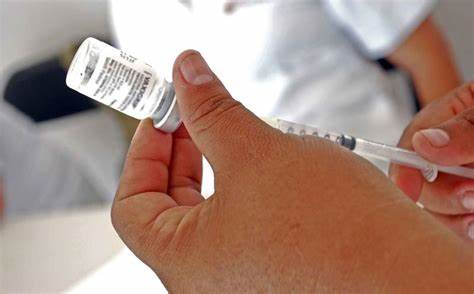Eventos adversos asociados a la vacunación en menores de 2 años de edad. Provincia Granma. 2014-2018
Palabras clave:
Vacunación, Efectos colaterales y reacciones adversas relacionados con medicamentos.Resumen
Se realizó un estudio descriptivo, de corte transversal con el objetivo de describir los eventos adversos asociados a la vacunación en menores de 2 años de edad en la provincia Granma durante el periodo de enero de 2014 a enero de 2018. El universo estuvo constituido por 2074 reportes notificados al sistema de vigilancia a través de Encuestas establecido por el Programa Ampliado de Inmunización del MINSAP (Modelo 84-30-2). El grupo de edad más afectado fue de 1 a 6 meses (65.0%), predominio del sexo femenino (54.1%), la vacuna Heberpenta fue la de mayor reactogenicidad con una tasa específica de 813.8 x 105 dosis aplicadas, prevalecieron los eventos comunes leves (fiebre, reacción local, irritabilidad) con el 91.1%. Según el sitio de aplicación los mayores reportes de eventos adversos correspondieron al uso de la vía intramuscular y la aplicación en la cara anterolateral del muslo (CALM), con más del 95.0% de los casos reportados. Con todos estos resultados se pudo concluir que los eventos adversos fueron más frecuentes en lactantes, con predominio de los eventos adversos sistémicos y de estos la fiebre como el que más prevaleció. De los eventos adversos locales, el dolor y la induración en el sitio de la inyección fueron los eventos más frecuentes. No existieron diferencias apreciables por sexo. No existieron secuelas, ni fallecidos.
Descargas
Citas
1. Castillo M. Epidemiología. La Habana: Pueblo y Educación; 1984.
2. Galindo Santana BM, Peláez Sánchez R, Galindo Sardiña MA, León Villafuerte M, Concepción Díaz D, Estruch Rancaño L. Vigilancia activa de eventos adversos a la vacuna Pandenrix para prevenis la influenza AH1N1 en Cuba. Rev Cubana Med Trop 2011; 63(3): 231-8.
3. Galindo Santana B, Arroyo Rojas L, Concepción Díaz D. Seguridad de las vacunas y su repercusión en la población. Rev Cubana Salud Pública 2011; 37(1): 149-58.
4. Organización Mundial de la Salud. Vacunación Segura. Cómo enfrentar los eventos supuestamente atribuidos a la vacunación e inmunización. [Internet]. Washington DC: OPS; 2002. [Citado 19/4/2016]. Disponible en: https://www.who.int/immunization_safety/publications/aefi/en/vacunacion_segura_S.pdf
5. Organización Panamericana de la Salud. Vacunación segura: Módulo IV Aspectos técnicos y clínicos de los eventos supuestamente atribuibles a la vacunación o inmunización (ESAVI). Washington, DC: OPS; 2007.
6. Álvarez García FJ, Van Esso Arbolave D. Intervalos y compatibilidad entre las vacunas [Internet]. España: Comited Asesorde Vacunas; 2015. [Citado 11 Oct 2018]. Disponible en: https://vacunasaep.org/profesionales/intervalos-y-compatibilidad-entre-vacunas
7. Álvarez García F. Características generales de las vacunas. Pediatr Integral 2015; 19(10): 666–74.
8. Comité Asesor de Vacunas de la AEP. Seguridad de las vacunas. Contraindicaciones y precauciones. Manual de vacunas en línea de la AEP. [Internet]. Madrid: AEP; 2016 [Citado 24/6/2016]. Disponible en: https://vacunasaep.org/documentos/manual/cap-3
9. Comité Asesor de Vacunas de la AEP. Manual de vacunas en línea de la AEP. [Internet]. Madrid: AEP; 2015 [Citado 24/6/2016]. Disponible en: https://vacunasaep.org/documentos/manual/manual-de-vacunas
10. Organización Panamericana de la Salud. Sistemas de notificación de incidentes en América Latina [Internet]. Washington, D.C: OPS; 2013. [Citado 11/10/2018]. Disponible en: https://www.paho.org/hq/index.php?option=com_content&view=article&id=8557:2013-sistemas-notificacion-incidentes-america-latina-2013&Itemid=3562&lang=es

Descargas
Publicado
Cómo citar
Número
Sección
Licencia
Avisos de derechos de autor propuestos por Creative Commons
1. Política propuesta para revistas que ofrecen acceso abierto
Aquellos autores/as que tengan publicaciones con esta revista, aceptan los términos siguientes:- Los autores/as conservarán sus derechos de autor y garantizarán a la revista el derecho de primera publicación de su obra, el cuál estará simultáneamente sujeto a la Licencia de reconocimiento de Creative Commons que permite a terceros compartir la obra siempre que se indique su autor y su primera publicación esta revista.
- Los autores/as podrán adoptar otros acuerdos de licencia no exclusiva de distribución de la versión de la obra publicada (p. ej.: depositarla en un archivo telemático institucional o publicarla en un volumen monográfico) siempre que se indique la publicación inicial en esta revista.
- Se permite y recomienda a los autores/as difundir su obra a través de Internet (p. ej.: en archivos telemáticos institucionales o en su página web) antes y durante el proceso de envío, lo cual puede producir intercambios interesantes y aumentar las citas de la obra publicada. (Véase El efecto del acceso abierto).







